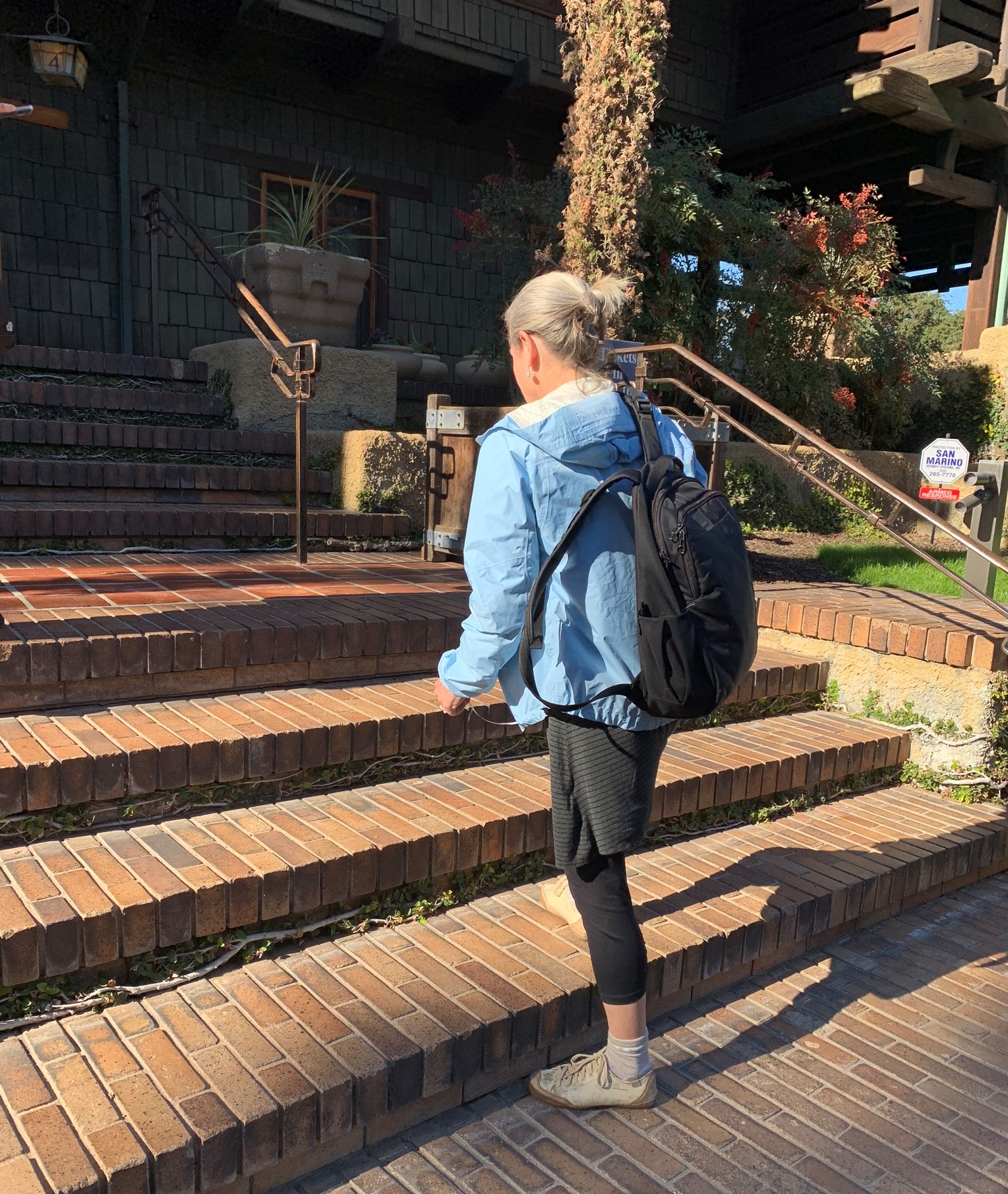All About Stairs
Here in Seattle, our terrain has some pretty impressive bluffs, valleys, and slopes. A cross section of Seattle looks like one of those sine waves you’ve forgotten about from high school calculus class. Streets abruptly end at long staircases; houses sit with their front doors perched high above sidewalks; back gardens slope steeply down ravines to creeks.
Meandering stairs break up the height of the staircase, interrupting the sense of steepness.
Stairs get us to and from these destinations and the joy of the journey depends quite a bit on the details. Considerations include the size of the steps, materials, who is climbing the stairs, and what function the stairs serve (entrance to a home, access to outdoor recreation, seat stairs, etc.) In this post we look at the physical perception and impact of stairs based on their dimensions.
Grass stairs extend back into the landscape easing the transition by integrating into the slope.
The height of the step (riser) and the width of it (tread) influence how it feels to walk up or down a flight of stairs. There is a formula that identifies a sweet range that balances the ease of moving up/down and the gait of moving along: 2 Risers + 1 Tread = 24” – 26”. The riser/tread combination can make traversing stairs feel like a chore or a breeze; a hike or a stroll; an undertaking or entertaining.
Taller risers impart a swift ascent/descent, a steeper slope, the fastest route from one place to another.
The steep ascent is broken up with grass landings that opens the space.
Lower risers convey a more relaxed pace, a gentle transition, and a physically easier, but longer route.
The low riser height makes this transition looks quite easy. It is also an important consideration for children, elderly, or people with mobility challenges.
To get a better understanding of riser/tread combinations we went for a walk with our tape measures, paying attention to how easy or difficult it was to traverse the stairs. After documenting riser and tread combinations, we found that stairs falling within the magic range were more comfortable and enjoyable to walk on, no matter what their height.
These stunning stairs (of which there were many!) are an easy and pleasant climb with 3-1/2” risers and an 18” tread (2R+1T = 25 ).
The stairs have 6” risers, but the 22” treads (2R+1T = 34”). make for a really awkward ascent, having to take a half step before the next riser.
Gorgeous stairs flanked by beautiful planters (L), but an uncomfortable climb with 6” risers and 18” treads (2R+1T = 30”). If the treads were just a couple inches shorter, like these 6” x 14” (2R+1T = 26”) poolside steps (R), you would focus on your surroundings rather than watching your step.
Brick stairs with 6-1/2” risers and 16-1/2” treads (2R+1T = 29-1/2”). There was some disagreement on the comfort of these steps. Maybe it was because we were distracted by the beautiful surroundings? Or there were so few of them?
The amount of space you have to add stairs will affect the height of your risers; the more horizontal distance you have, the shorter the risers can be. But even if you have to have to max out the height of your riser because of space constraints, if you stay within this riser/tread range you are sure to avoid an awkward climb.








